

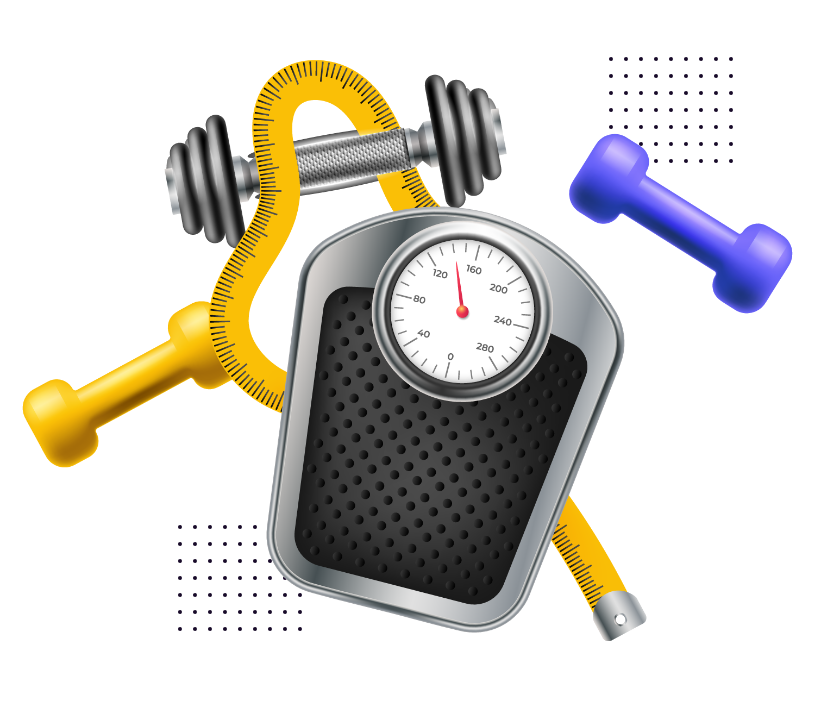
BMI =
You are in the range.
Find out why this result matters
BMI weight ranges
Less than 18.5 = Underweight
Between 18.5 - 24.9 = Healthy Weight
Between 25 - 29.9 =
Overweight
Over 30 = Obese
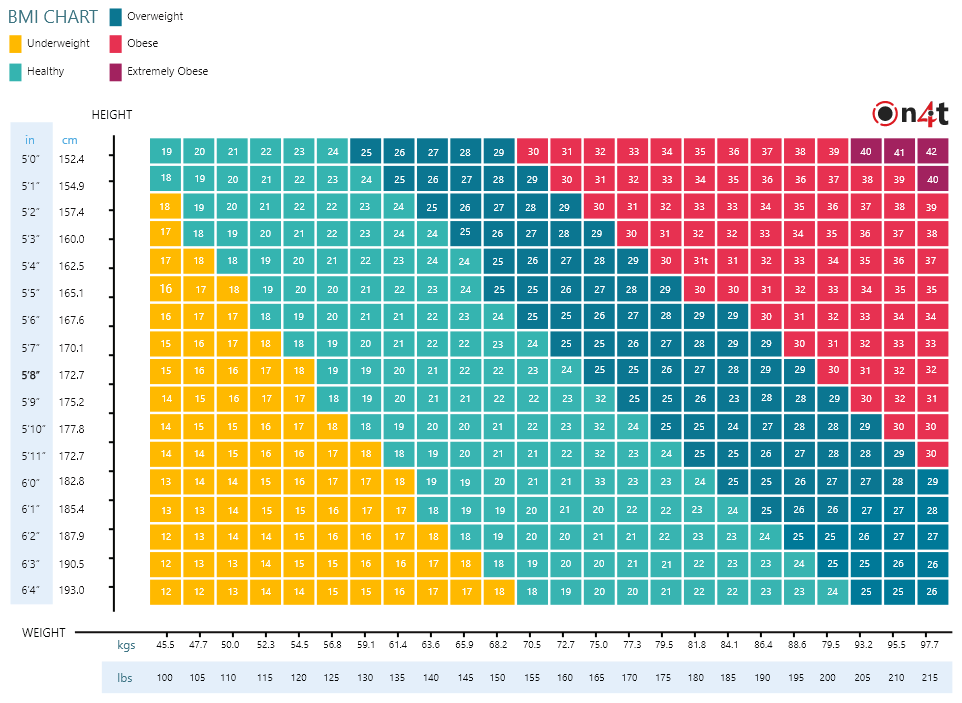

A clever BMI calculator helps calculate the body weight index number and weight. You can calculate BMI
for males, women, teenagers, and children. This calculator can be usual, underweight, overweight, or
obese in which group your body mass index will fall in. In this calculator, it is possible to enter your
weight in kgs (lbs) or kg and your height in feet, inches, or millimeters for computations.
Read about the Bmi formula, chart, scale, scope, male and female classifications (in adulthood), and
children and teens, and much more in this article.
A body mass index is called a measurement of leanness or corpulence derived from an individual's mass (weight) and height. Please note that this value is not directly measuring body fat but is modestly associated with more direct body fat measurements. It is defined as the mass of the body splits by the square of the height of the body and is universally stated in kg/m2, which is the result of mass in kg and height in meters. BMI is calculated to determine if the person is underweight, overweight, or obese. BMI is considered. Remember that your fitness plan may differ in BMI ranges. The more weight you gain, the higher your body mass index will be, but it does not imply that you are obese.

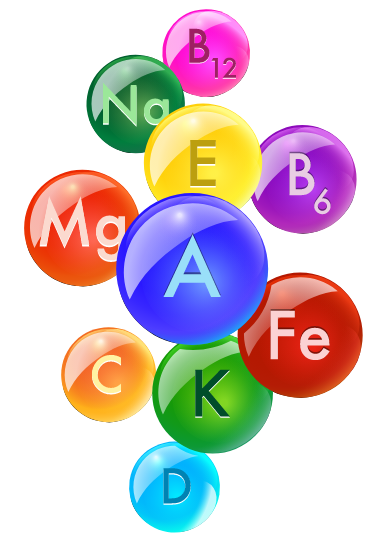
Let's look at the formula:
BMI Formula (English version):
For Pounds & Inches:
²BMI=Weight(lb)/(Height(in))²×703
For English measures or the aforementioned BMI calculation, pounds should be separated into inches squared. This is also to be converted from lbs/inches2 Kg/m2 by 703. This is to be done.BMI=Weight(kg)Height(m)2=mh2
m=mass(in kilograms)
h=height(in meters)
The equation above shows weight in kilograms and height in square meters. You must divide your
height by 100 to translate this to meters if your height was measured in cm (m).
Our computer also evaluates the body mass index using the aforesaid formulas.

Check the example given below
Calculate BMI using English Measurement:
Example:
What is my BMI, if:
My weight is 150lbs
My Height is 5′5"(65inches)
Let insert the number into the formula :
BMI=150/(65)2×703=24.96
My Height is 165cm(1.65m)
My Weight is 68kg
At that time, add the values of the formula
BMI=681.652=24.98
Generally, you can find out if you are a health danger while determining your body mass index
reading.
The same formula is used for the calculation of body mass index for men and women
for men and women in our adult BMI calculator.
Our calculator is divided into four major divisions of the population: males and
women (adults), children and adolescents. This BMI calculator for body mass index works like this:
Men's BMI computer: I would like to know what normal men's BMI is. In the calculator, the age and
weight index can be used to compute men's body mass index according to weight status.
BMI Women's Calculator: Helps calculate female BMI and reveals if you have a healthy female body
mass index or an obese one.
BMI Teenage Calculator: To calculate BMI for adolescents based on clinical growth charts, and to
determine if teenage teens are underweight, healthy weight, overweight or obese.
BMI Children's Calculator: Allow BMI to be calculated for children according to percentile
age-dependent on CDC children's growth charts. CDC BMI Chart for Kids is created by this tool.

The Body Mass Index is interpreted by conventional weight categories for adults 20 years of age and
older. Experts have shown that the BMI scale places you in one of six categories. For adult men and
women of all types and ages, these categories for BMI are the same.
Look at the chart you've
presented!
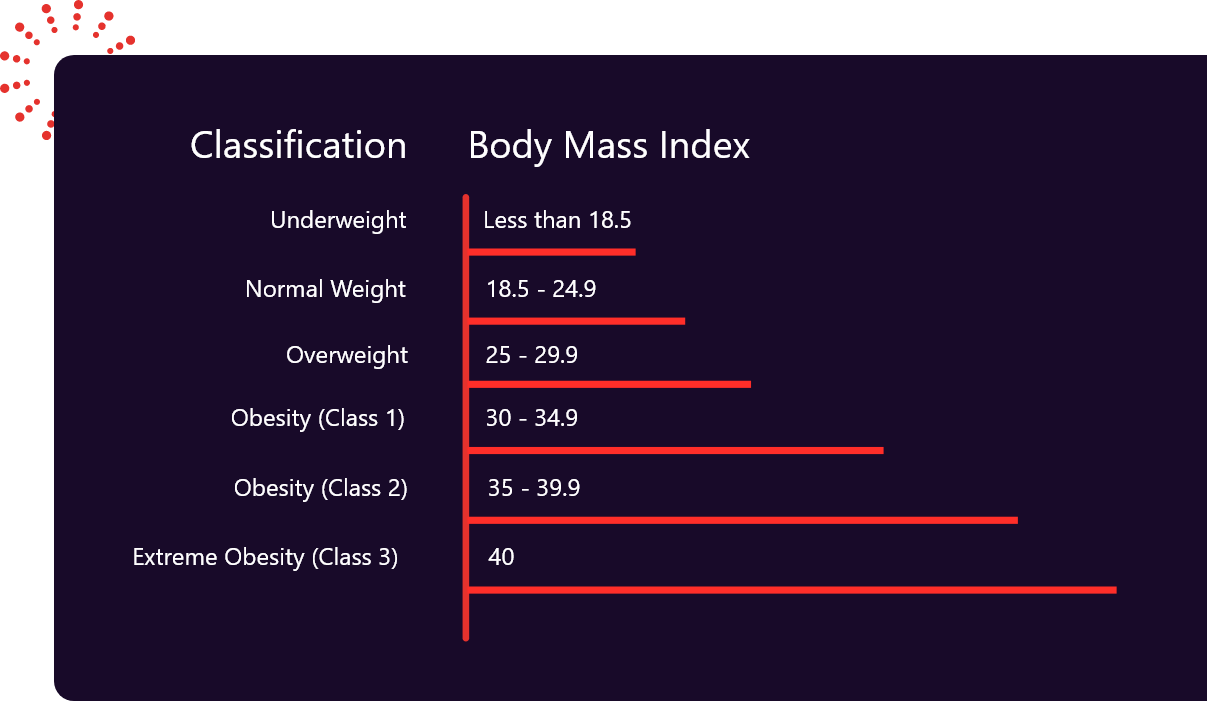
Perhaps your weight can be too low by means of a lean body mass index.
Remember, the lower the spectrum of health dangers your body will be!
BMI in between 18.5
and 24.9 is usually termed under Normal Weight or Healthy weight Range:
Recall the
recommended amount of body weight for persons with an IMB between 18.5 and 24.9.
Note that an overweight range of such a disease increases the danger of many diseases. Recent studies have indicated a higher rate of diabetes, blood pressure, and heart disease in men at 27.8 and in women at 27.3. Try to find your typical range in the following body mass index calculator for men and women! Consult your health care professional when you realize that you are overweight!
People within this group are susceptible to physical disorders. You should consult your health care professional ideally, in order to achieve a healthy range, and consider reducing your weight by 5 to 10%. This reduction in weight is good to achieve your desired BMI for adults.
Studies have shown that, if an individual has a BMI of 40+, the risk of weight-related diseases and potentially premature mortality is very significant. Consult your doctor for advice based on your body mass index ranges!
To lower your BMI, you need to keep to a moderate loss of weight procedure,
which is 1 to 2 pounds per week. Studies have shown that a quick reduction of weight may lower your
muscle rather than your fat. Besides, your possibilities to develop other health issues arise, which
include nutrient deficiencies and gallstones. To achieve your weight loss targets, you need to make
legitimate longer-term modifications to your diet and stick to physical activity!
Whether you
try to lower or keep your weight does not matter; your eating habits should be improved.
The fat
intake must be reduced and all milk products and soft drinks avoided. Simply stay with physical
activity for at least 30 minutes a day and eat properly for healthy BMIs (normal weight)


When you are overweight and physically inactive
with a
body mass index of more than 25 kg/m2:
You can be starved and develop if you
are
underweight:
The Body Mass Index is referred to as an age and sex index for children and
adolescents. Note that the BMI percentile results for children and adolescents.
Try the
percentile BMI calculator for your teen and kids to find CDC growth charts. Test it in percentile
categories. Note that BMI ranges for adults (women and men) will remain the same throughout their
lifetime, while these statistics differ in children as youngsters continue to grow at various rates.
Let's look at this graph of BMI to get a good notion of percentiles:


You need to know all of the values in the body mass index calculator if you want to know BMI for adults, men, and women, children, and teenagers.
This calculator allows you to measure tail at height, and not only is Body Mass Index the factor to check your general condition after you have achieved the result.
This adult BMI calculator for males and females generates once you have entered the above fields:

First, you need to select the 'Child & Teen' option from the field of this tool; you need to then select the 'Boy' if you want to calculate boy and child BMI; select 'Girl' for children and girls if you want to calculate boy/teen girls. Next, you need to put the 'age' in a given field.
You need to know all of the values in the body mass index calculator if
you want to know BMI for adults, men, and
women, children, and teenagers.
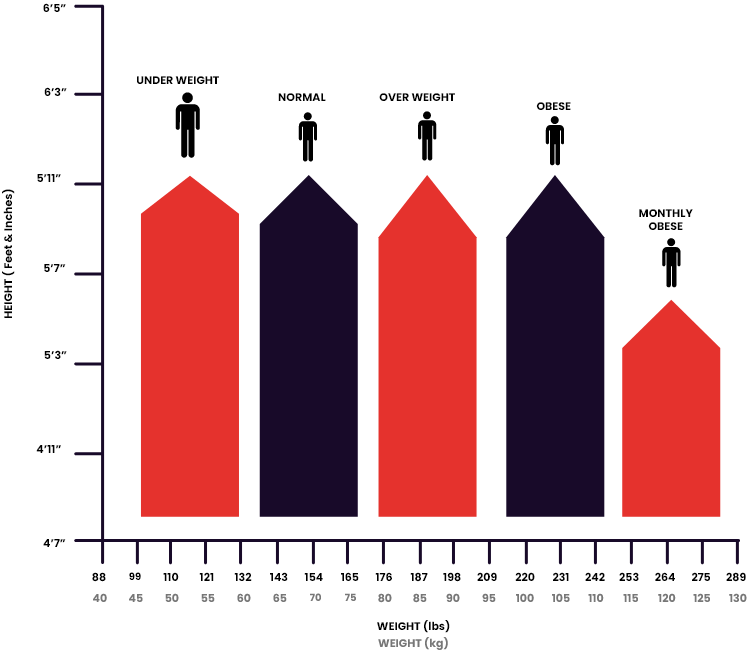
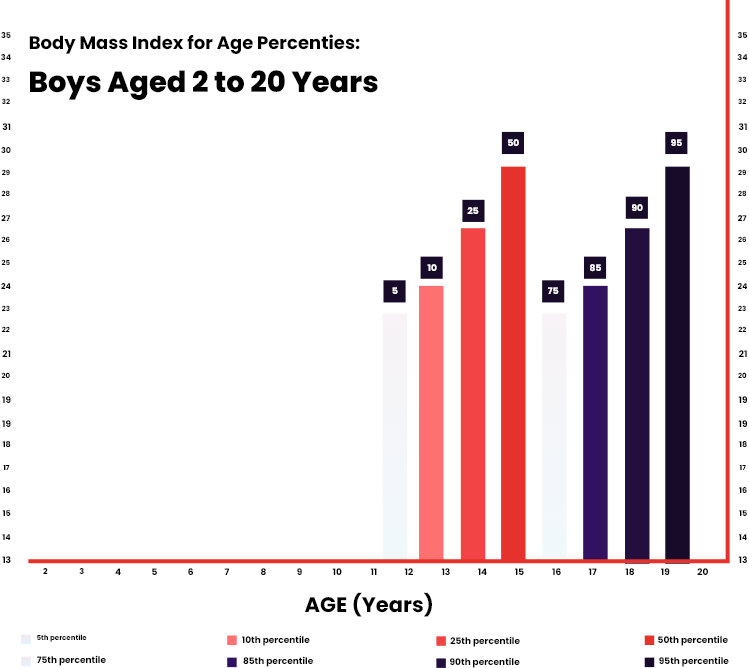
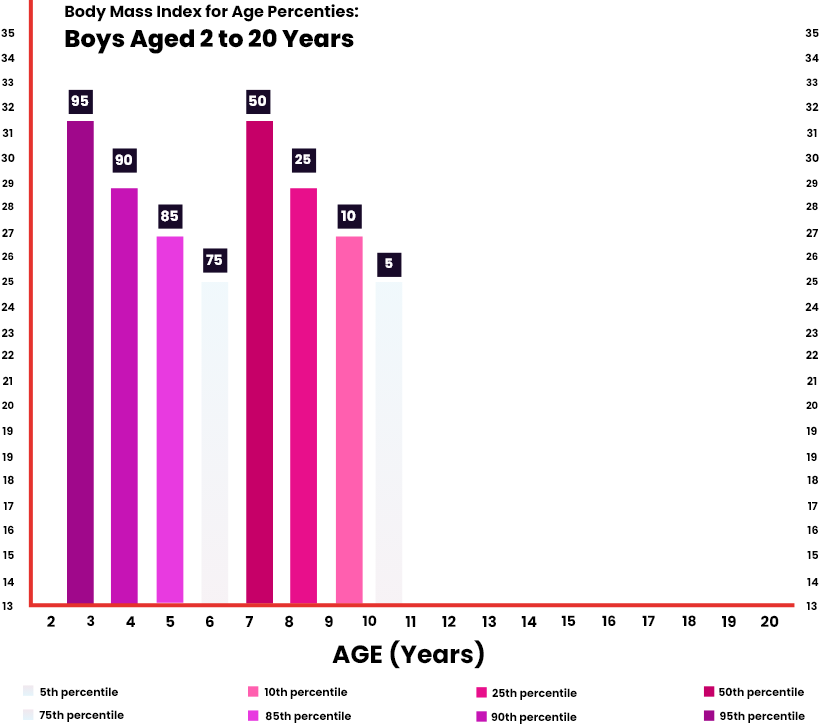
Once BMI is computed as "percentile" for teenagers and
young people, it does not matter if the graph or calculator for children and teenagers is used.
These percentiles are measurements reported about US children by a child's BMI; they are taken in
the 1963-65 through 1988-94 domestic surveys. Optimistic research shows that changes in weight and
height are linked to body fatness during growth and development. The body mass index of a child
should therefore be regarded as compared to other children of the same age and gender.
Let
shows the percentile growth diagram of BMI for Age :

BMI is considered a valuable tool in order to determine a healthy weight, although
experts have shown its reliability is dubious. Note that BMI is not a reliable measure when it
comes to analyzing body fat! The overall nutritional status index assesses corresponding to the
height and weight ratio. But nobody fat or muscular mass is mentioned. Also, BMI
is no
difference between water weight, bone weight, etc. BMI is not a particular person's sex. For
example, the body mass index of males and females is the same, although males have more muscle
mass and females have more fat mass not included in the BMI diagram.


Good nutrition and proper physical activity are part of a healthy lifestyle. The calories you eat from food and the calories you burn from physical activity will be balanced if your body weight hasn't altered for several months. Consider adjusting the pattern and level of physical exercise to attain your aim if you are to acquire or lose weight.
Calories are not needed all the time, but it can be helpful at first to determine
the number of calories in foods and drinks that you eat regularly. Calories will counteract to see
how many calories you need a day for your age, sex, height, weight, and physical activities to
maintain your current weight. Click on the result to see the daily amounts recommended for
the
caloric calorie level for fruit, vegetables, protein, milk, and grain.
Type in the foods you eat
and drink and the calories you drink each day, to learn how many calories you take in. Check for the
size and number of calories in the nutrition fact label and take portion size into account. A food
journal helps you to understand what you are eating. Each day and for the length of your time, begin
to write down your physical activities.
A weight management food plan includes a variety of healthful foods. Add a range of hues and think of it as rainbow eating. The vitamins, fiber, and minerals of dark, leafy greens, oranges, and tomatoes — even fresh herbs. Increases the color and nutrients quickly and conveniently using frozen peppers, broccoli, or onions in stews and omelets.
Emphasizes fruit, vegetables, whole grains, and milk and milk products that are fat-free and low fat includes a range of protein sources such as meats, meat, and poultry, eggs, legumes, soy products, nuts, and seeds. It is low in lipids, trans fats, cholesterol, salt, and added sugars and stays in your everyday calories.
Fruit is good, fresh, frozen, or canned. Try fruits beyond bananas and apples like mango, an apple, and kiwi fruit. Try a frozen, canned, or dry kind when fresh fruit is not in season. Keep in mind that dried and canned fruits may include added sugar or syrup. Choose canned fruit varieties packed with water or juice. Prepared meal containers with broccoli noodles, carrots, rice, or soba.
Serve with a herb, such as a rosemary, in grilled or cooked veggies. Also, sauté (panfry) vegetables with a little cooking spray in a non-stick pot. Or try a simple side dish, heat and serve, frozen or canned vegetables. Look for canned plants with no additional salt, butter, or cream sauces. Try a new veggie every week for the variety.
Consider low-fat and fat-free yogurts without adding sugar, in addition to low-fat and low-fat milk. These come in several different tastes and might be a nice option for dessert.
Try to make healthier changes when baking or grilling if your favorite dish asks for frying fish or pan chicken. Try dry beans instead of meats. Perhaps. Asking friends and looking for fewer calorie recipes on the internet and magazines, you may uncover a new favorite food surprising to see!
Healthy food is about equilibrium. Even when they are high in calories, fat, or added sugar, you can enjoy your favorite dish. The idea is to consume them just once in a while and balance them with more healthy food and fitness.


1
Consider low-fat and fat-free yogurts without adding sugar, in addition to low-fat and low-fat milk. These come in several different tastes and might be a nice option for dessert.
2
Eat lower quantities. You can use a lesser size or merely half a bar to get the beloved high-calorie food.
3
Try a variation with a lesser calorie. Use ingredients with reduced calories or prepare food differently. Try making it with non-iodized Milk, less butter, fatty cheese, fresh spinach, and tomatoes, for example, if your macaroni and cheese recipe includes whole milk, butter, and full-fat cheese. Remember that your portion does not increase.

The online calculator does not claim that the given information is
accurate or that the results from the above BMI calculator are obtained. The results of this tool
are simply estimates for educational purposes.
The data provided by this tool are not meant to
replace MEDICAL professional advice, diagnosis, and treatment.
